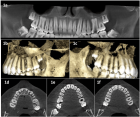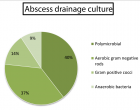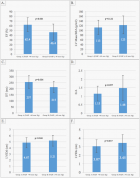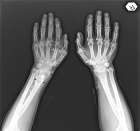Table of Contents
A General Evaluation of the Cellular Role in Drug Release: A Clinical Review Study
Published on: 26th March, 2024
Cells have emerged as highly promising vehicles for delivering drugs due to their unique advantages. They have the ability to bypass immune recognition, navigate biological barriers, and reach difficult-to-access tissues through sensing and active movement. Over the past couple of decades, extensive research has been conducted to understand how cell carriers can overcome biological barriers and influence drug effectiveness. This has resulted in the development of engineered cells for targeted drug delivery to specific tissues. Despite the presence of exciting developments, a comprehensive understanding of the challenges and potential strategies is necessary for the effective clinical application of cell-based drug carriers. This review provides an overview of recent progress and novel concepts in cell-based drug carriers, as well as their potential for translation into clinical practice. Additionally, we delve into important factors and emerging strategies for designing the next generation of cell-based delivery technologies, with a particular emphasis on achieving greater accuracy and targeted drug administration.
Small Bowel Obstruction after Abdominal Myomectomy Involving Barbed Suture: A Case Report and Preventive Measures for Risk Reduction
Published on: 11th March, 2024
In this report, we describe a case of a small bowel obstruction in the immediate postoperative period following an abdominal myomectomy. After failing conservative management, the patient underwent diagnostic laparoscopy, and the exposed tail of an absorbable barbed V-loc™ (Covidien™, Mansfield, MA, USA) suture used during the myomectomy was identified as the nidus of the small bowel obstruction. While barbed-suture-related bowel obstruction is a known rare complication that is well described in the general surgery literature, it is less documented in gynecological surgery literature. We anticipate the risk to be higher after multiple myomectomy, as postoperative contracture of the uterus can cause protrusion and exposure of the barbed suture tail. Though barbed suture can be safely used for hysterotomy closure during myomectomy, surgeons who opt to use barbed suture during myomectomy should be aware of this potential complication, take intra-operative measures to reduce the risk of postoperative tail protrusion and maintain a high index of suspicion for bowel obstruction in the immediate postoperative period.
Second Stage of Labor Cesarean Section Maternal and Fetal Outcomes
Published on: 26th February, 2024
Background: Cesarean section at the second stage of labor occurs when the mother requires delivery with full dilatation of the cervix by cesarean section (CS), which poses a risk to the mother and fetus.Purpose: To study the maternal and fetal outcomes of second-stage cesarean section. Methods: This comparative study was conducted at Alhasahisa Teaching Hospital from August 2021 to January 2022. The study sample comprised 226 women who fulfilled the inclusion criteria, including 113 who delivered by second-stage cesarean section and 113 who delivered by first-stage labor cesarean section as controls. Data were collected using a questionnaire filled out by doctors after informed consent was obtained. Results: The common indications in women who delivered via second-stage cesarean section were fetal distress in 62(51.9%), obstructed labor in 26(23%), and failure to progress in 25(22.1%). In women who underwent first-stage cesarean section, the common indications were failure to progress in 85(75.2%), fetal distress in 16(14.2%), and chorioamnionitis in 12(10.6%) (p < 0.05). The reported maternal complications in women who underwent second-stage cesarean section were postpartum hemorrhage in 34(30.1%), sepsis in 11(9.7%), prolonged labor in eight (7.1%), extended tears in four (3.5%), umbilical cord prolapse in three (2.7%), and episiotomy in three (2.7%). The admission to the neonatal intensive care unit (NICU) and the causes of admission were more common among the babies of the women delivered by second-stage cesarean section than the babies of the women delivered by first-stage cesarean section (p value < 0.05). Maternal complications in women who underwent second-stage cesarean section included postpartum hemorrhage in 34(30.1%), sepsis in 11(9.7%), prolonged labor in 8(7.1%), uterine extension in 4(3.5%), umbilical cord prolapse in 3(2.7%), and episiotomy in 3(2.7%) (p < 0.05).Conclusion: Second-stage labor cesarean section showed more complications of postpartum hemorrhage, sepsis, and extended tears, as well as more fetal complications, such as admission to the neonatal intensive care unit, fresh stillbirths, low Apgar scores, and birth asphyxia.
Cervical Cancer and Quality of Life: Systematic Review
Published on: 15th February, 2024
Cervical cancer is diagnosed annually in thousands of women around the world, and thousands die from it. The main objectives of this systematic review were to understand and characterize cervical cancer and understand what impacts it has on the lives of diagnosed women and survivors. To this end, a systematic review based on the PRISMA principles was carried out. The search was carried out through the Online Knowledge Library (B-on), obtaining 1179 articles, which were verified, considering the inclusion and exclusion criteria, with 18 articles and 20 additional references included in this review. The results demonstrated that cervical cancer (1) is preventable and can be treated with good results if identified early; (2) it is caused by Human Papilloma Virus infection; (3) it can be treated using different techniques; and (4) it has significant impacts on women's quality of life.
A Near Miss: Peri-mortem Caesarean Section
Published on: 7th February, 2024
Maternal cardiac arrests are rare but serious events where recognition and prompt initiation of resuscitation are crucial. Obesity is a common risk factor encountered in disorders of pregnancy as well as maternal cardiac arrests. Cardiac arrest algorithms should be followed with some changes to accommodate maternal and fetal health. We present a case of a 32-year-old pregnant patient who had a perimortem caesarean section due to maternal cardiac arrest.
Thyroid Cancer and Quality of Life: A Literature Review
Published on: 5th February, 2024
Thyroid cancer, characterized by the development of malignant tumors in the cells of the thyroid gland, impacts the quality of life and well-being of diagnosed patients. This article explores different aspects of this type of cancer, including everything from its typologies, incidence, causes, and risk factors to symptoms, diagnostic methods, and treatment options. Furthermore, the impact on Health-Related Quality of Life (HRQoL) is addressed, highlighting that, although the prognosis is generally favorable, patients can experience significant negative repercussions. Therefore, the need for further investigation into the priorities of psychological intervention with the population with this problem is emphasized.
Antioxidants and Pregnancy Complications: Exploring Therapeutic Strategies for Better Outcomes
Published on: 25th January, 2024
Pregnancy complications present significant challenges, impacting maternal health and fetal development. Oxidative stress, a key contributor to various pregnancy-related disorders such as preeclampsia, gestational diabetes mellitus (GDM), and preterm birth, has spurred interest in exploring antioxidant interventions. Antioxidants, known for their ability to counteract oxidative damage, have emerged as potential therapeutic agents to mitigate these complications. This paper synthesizes current knowledge on the role of antioxidants in pregnancy, elucidating their mechanisms of action, sources, and impact on oxidative stress-related complications. It examines diverse antioxidant compounds, including vitamins C and E, selenium, and natural phytochemicals, highlighting their potential to modulate oxidative stress pathways and promote maternal-fetal well-being. Furthermore, this paper critically analyzes clinical studies, meta-analyses, and preclinical research exploring the efficacy and safety of antioxidant supplementation during pregnancy. It discusses the complexities surrounding optimal dosages, timing, and formulations of antioxidants, aiming to delineate strategies for their integration into prenatal care. In conclusion, this review provides insights into the promising role of antioxidants as therapeutic strategies to alleviate pregnancy complications associated with oxidative stress. It highlights avenues for future research, advocating for a deeper understanding of antioxidant mechanisms and their optimal utilization in prenatal care to enhance maternal and fetal health outcomes.

If you are already a member of our network and need to keep track of any developments regarding a question you have already submitted, click "take me to my Query."





















































































































































